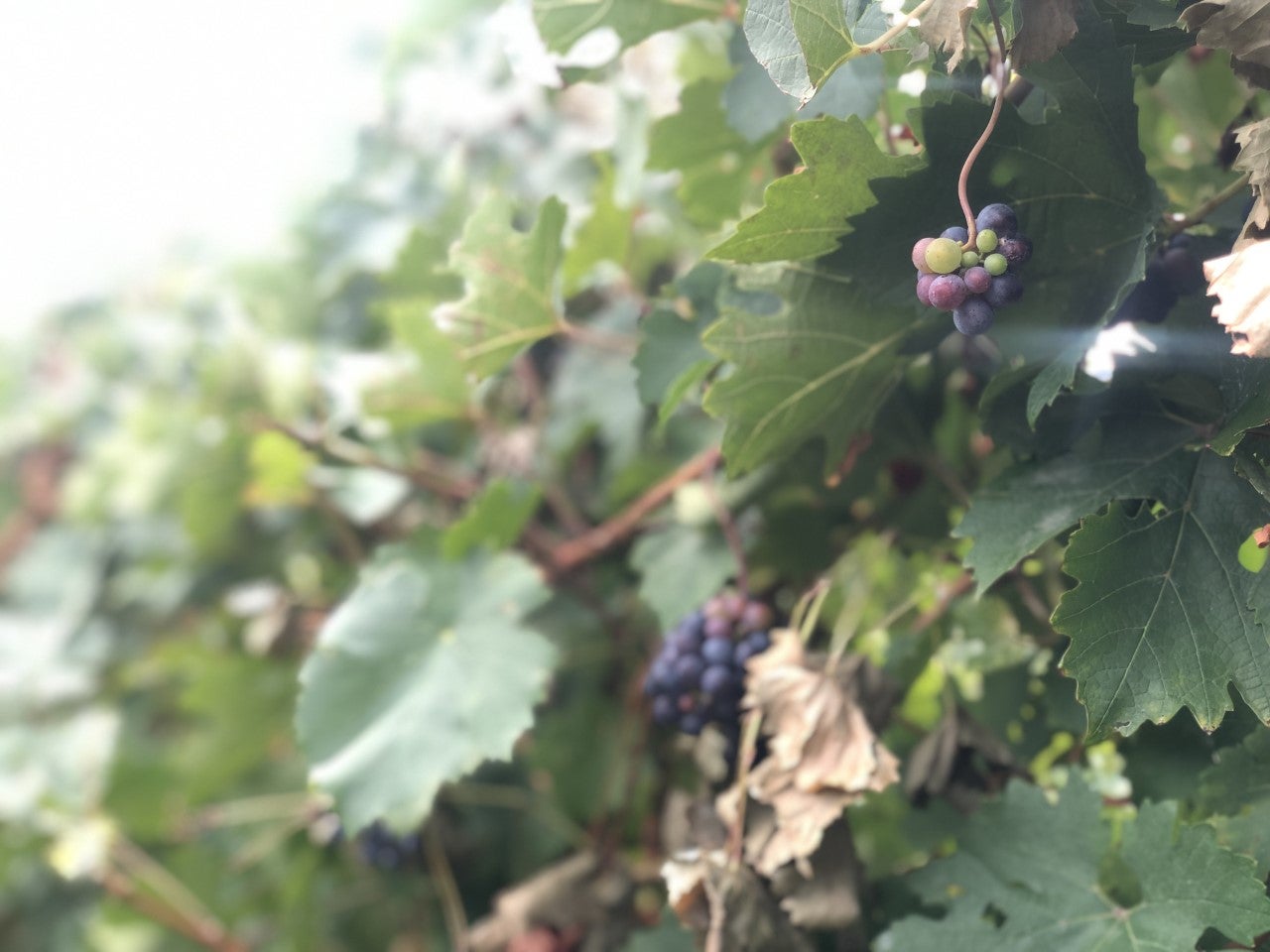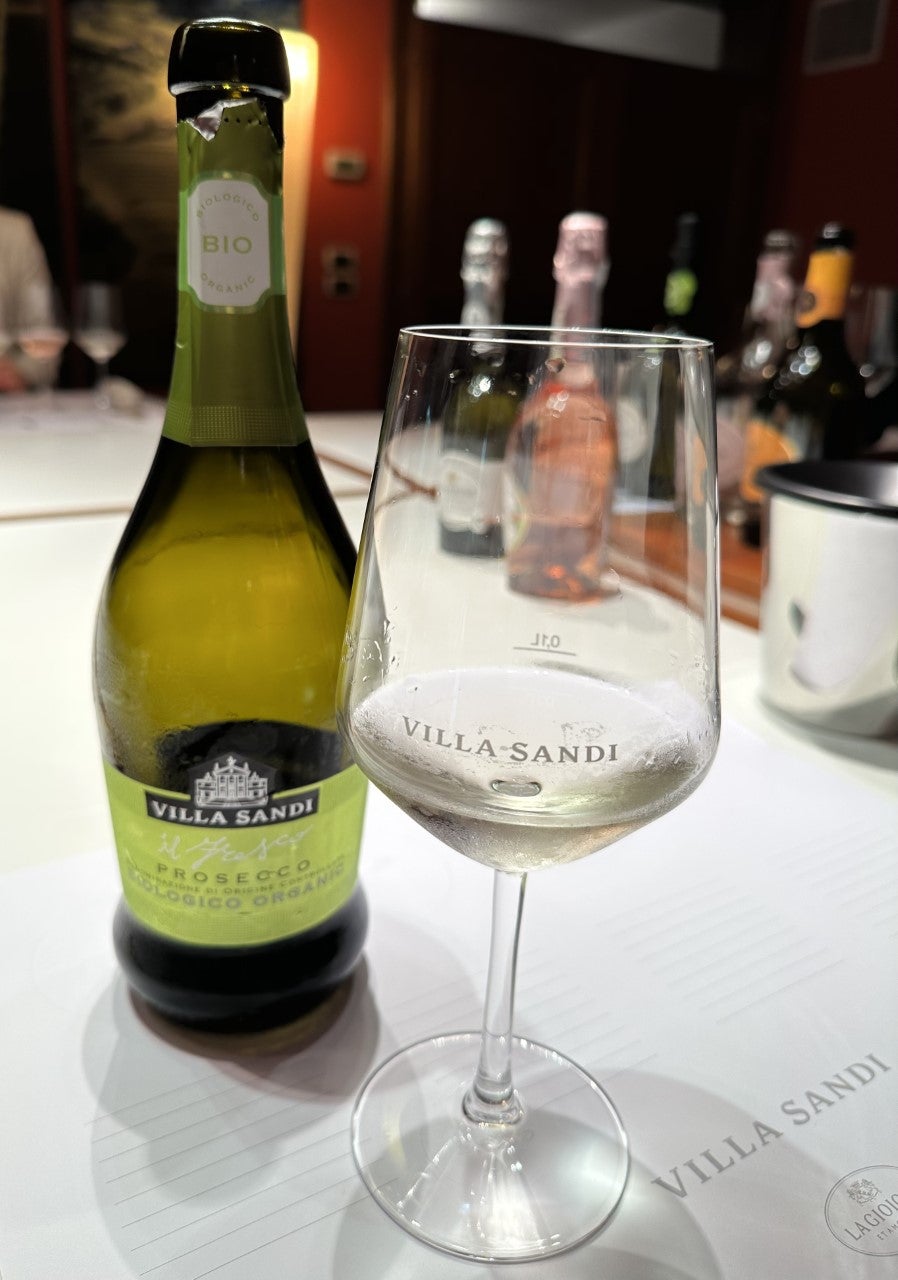The Independent's journalism is supported by our readers. When you purchase through links on our site, we may earn commission.
How Prosecco popped its bubble
Often seen as Champagne’s cheaper and inferior cousin, the Italian sparkler is far more than that

I’m standing on a little arched bridge that crosses over a small canal. Below, the water slowly flows between old pastel coloured buildings. You’d be forgiven for thinking I’m in the city of water – I’m actually in Venice’s historic little sister city just 30 minutes north, Treviso, otherwise (and obviously) known as Little Venice.
I’m here for Italy’s most famous drinkable export. This is the birthplace of Prosecco. Usually at this time of year they’re busy with the harvest, but after the hottest summer on record for decades, they’d already finished the week before I arrived.
The area has Unesco World Heritage Site status for its viticultural heritage, but it’s not been an easy journey to get here, and it’s likely happened far more recently than you might think.
Prosecco has been made in some form in Italy since 1AD, I’m told by Arianna Pizzolato, who works in marketing at the Prosecco DOC Consortium – the association that protects the production of Prosecco. Despite its long-standing history, Prosecco was tarred as Champagne’s more affordable, yet inferior, cousin. A moniker it’s struggled to shake off, and one that dilutes the craft, passion and work that goes into making this bubbly tipple.
Luckily for Prosecco, though, the Italian government and the EU have recognised (and more importantly valued) the process of making Prosecco and sought to protect its characteristics by preventing it from being made all over the world.
How did they achieve this? Well, it’s all in a name. They changed the name of the Prosecco grape, which is native to the area and date backs to the Roman period. In order to protect Prosecco, it needed to be named after a region (like Champagne has been since 1927). To further complicate matters, the region couldn’t have the same name as the Prosecco grapes. So Prosecco grapes were removed from the grape register, and renamed glera.

This meant Prosecco obtained DOC (Denominazione di Origine Controllata, or controlled designation of origin) status. To have this recognition and the official Prosecco name adorned on the bottle, the entire process of harvesting, wine making and bottling must all take place in the Prosecco DOC region. Much like a French stick, Neapolitan pizza and Cornish cream, these precious creations have a geographical origin status denoting the traditions of how and where they’re produced.
So, the grape name change and the DOC status were both important, as Prosecco vines are not only found in the northwest of Italy, like you might think. They’ve also been found far, far away in Brazil ,where they’re grown just as successfully. Here, it’s been allowed to keep the Prosecco name, as long as it’s not exported.
Difference between DOC and DOCG
DOCG: Stands for Denominazione di Origine Controllata e Garantita. Vineyards are often smaller and usually found on rolling hills between the towns of Conegliano and Valdobbiadene.
DOC: Short for Denominazione di Origine Controllata. The vines are grown on the flatlands, between the areas of Veneto and Friuli.
It gets a bit more contentious in Australia, where the grapes have been grown since the early 2000s. After the name change in 2009 from Prosecco to glera, Australia is still allowed to call its sparkling wine Prosecco and use it on their bottles. Although, purists wouldn’t see either country’s sparkling wine as proper Prosseco. The Australian government is holding fast as the grape variety name of Prosseco was registered in the country before Italy changed the grape name.
As Prosecco DOC is recognised in neighbouring New Zealand, Australia can’t export there, so it’s remained a relatively small market. That doesn’t stop it from being a multimillion dollar business.
So serious is the protection that when I’m at the Prosecco Consortium, the team is given some chocolate from the UK that claims to include Prosecco – they intend to rigorously test it, but I don’t stick around to find out.
Its DOC status has been the catalyst for catapulting Prosecco into the mainstream, a love affair that has been growing since the early 2010s. As prices back then were about a third of a bottle of Champagne, people could afford to drink something fizzy more often. Prosecco practically became a byword for sparkling wine. Such is its popularity that it’s sold more bottles than Champagne and Cava put together since 2015.

It’s big money, too. In 2021, Prosecco DOC made €3bn in turnover. Around 627.5 million bottles were produced (more than double from just 2013), and 85 per cent was exported to forgein markets. “Part of Prosecco’s success is that it’s the same name word around the world – and it’s easy to pronounce,” explains Pizzolato. It probably won’t surprise you to learn that the UK takes the lion’s share of the export with 24.5 per cent, but it’s closely followed up by the US (23.6 per cent), Germany and, surprisingly, France.
It’s not just about where Proseco comes from, though; it also needs to contain at least 85 per cent glera grapes. The remaining 15 per cent may include other varieties from the area such as perera, verdiso and bianchetta trevigiana. The other defining stage in the production of Prosecco is the second fermentation.
The Charmat-Martinotti method (also known as the tank method) takes place in large stainless steel tanks for a minimum of 30 days, and is where the yeast and sugar are added. This differs from Champagne’s method, where fermentation happens in the bottle. The Prosecco method is cheaper, and results in a more affordable product. It’s then bottled and given the all important recognisable blue and white DOC label.
The end result is frothy bubbles, and a spring-like freshness with floral aroma and taste, to which Prosecco owes its huge popularity. It has notes of melon, pear and green apple, but Prosecco is really identified by its floral notes and freshness, as it’s not aged like other wines.
Tips for drinking prosecco
Put it in: Not a flute! The bubbles get too big. Instead, go for a tulip shape that’s smaller than a white wine glass.
Pair it with: Sushi, savoury baked fish, Italian cured meats, Parmigiano cheese, spicy seafood.
Serve it at: 6-8 degrees celsius.
Undeterred by the other countries’ efforts, Prosecco DOC continues to innovate. Fast forward a decade from the DOC status award and Prosecco DOC has something else up its sleeve: rosé Prosecco. Created in 2019, it’s made up of 85 per cent glera grapes and 15 per cent pinot nero grapes. The first bottles hit shelves the following year, to much fanfare. It’s delicate, with notes of small soft red fruits, often with hints of pomegranate. It’s usually fruitier than its white counterpart. In short, another great win for the Prosecco movement.
The protected status is so culturally and financially important to Italy and the Veneto region that it should garner at least equal respect compared to its French and Spanish peers, if not more for its innovation. So raise a glass, as Prosecco is more than worth its bubbles after uncorking a drinking revolution.
Five wineries and vineyards to visit in Treviso
- Villa Sandi: One of the biggest and most impressive wineries, which started producing prosecco in the 1980s. It’s recognisable for its huge palladian-style 17th-century villa.
- La Marca: After starting in 1986, it represents nine co-operative wineries.
- Val d’oca: At this co-operative winery, everything is hand harvested.
- Masottina: Set in the hilly area of Conegliano, it’s driven by sustainability.
- Ca’ Coriana: This vineyard strives for biodiversity, and also has electric bike hire to cycle around it.
Where to buy Prosecco DOC in the UK
- Bottega
- Masottina organic
- La Marca extra dry
- La Gaioisa white and rose
- Perlage white and rose
- Villa Sandi white, rose and organic
Join our commenting forum
Join thought-provoking conversations, follow other Independent readers and see their replies
Comments


Bookmark popover
Removed from bookmarks